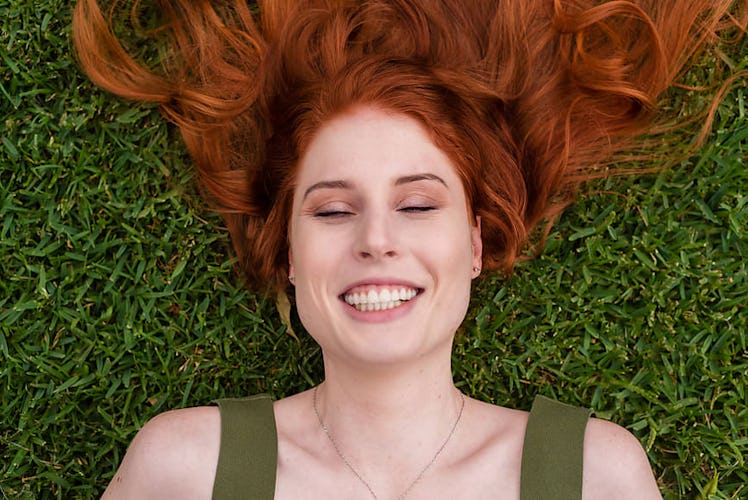
You Might Not Realize It, But Science Says This Detail In Your Eyes Communicates So Much
I've noticed I do this thing when I meet someone I find attractive, where I make direct eye contact at the beginning of our conversation, blink, and then keep making eye contact. I think it's sort of my way of saying that I want to continue talking, and I like looking at them. Do other people do that? Or is that just me? Either way, it's led me to wonder what blinking means in body language, and if it actually is something you can read into, or if, for most people, it's just something you subconsciously do to keep the ol' peepers clean and lubricated.
Well, while it might not always be considered a sneaky way to flirt, new research published in the scientific journal PLOS ONE suggests some people do use blinking as a subtle, nonverbal cue when talking to others. So it might be worth considering how many times you flutter your eyes open and closed, my friends, because people might just be reading into your blinks more than you realize.
According to a ScienceDaily press release about the study, humans blink around 13,500 times in a single day, which is apparently "much more frequently than is necessary for lubricating the eyeballs." So uh, what's all that extra blinking about, then, right?
Researchers from the Max Planck Institute for Psycholinguistics in the Netherlands explored this concept, and, as per the ScienceDaily press release, questioned whether blinking during short pauses in conversation might actually communicate any sort of feedback to the people talking to one another. Like, could blinking reveal something about how you really feel deep down about the other person? Could someone assume that you fluttering your eyes is equivalent to you nodding your head in agreement about something? What does all of this blinking really mean?
To find out, the researchers created a virtual reality experiment in which 35 volunteers between 18 and 38 years old were told to talk with an avatar, aka a "virtual listener," the ScienceDaily press release explains. The volunteers answered common conversational questions (like "How was your weekend?"), and the researchers controlled how the avatar responded nonverbally, using a mix of "short" blinks and "long" blinks, with both types of blinking lasting less than a second.
As subtle as those blinks might sound, the researchers found that the volunteers actually noticed a difference between short and long blinks, and therefore responded differently to the questions they were being asked, depending on the length of the blink. When the avatar's blinks were longer, for example, the volunteers consistently gave shorter answers to the questions. Yet, the study found that none of the participants consciously picked up on the avatar's different types of blinks. Whatever the volunteers were perceiving, it was all happening on an unconscious level. Fascinating, right?
According to the ScienceDaily press release, this research suggests that nonverbal cues like blinking, despite how subtle they might be, do impact the way you interact with other people, and they might just reveal how you really feel about something deep down, even if you're not bringing those feelings straight to the surface on a conscious level.
As for what different types of blinks might mean, Katie Zisk, a licensed marriage and family therapist and registered yoga therapist based in Connecticut, believes they can sometimes indicate trust. "When you feel stress and like you have to protect yourself, your eyes stay open longer to keep you safe from any danger that may be lurking," she tells Elite Daily in an email. "On the other hand, when you feel safe, you may blink more often. This symbolizes that you feel safe enough to let your guard down and relax."
All I know is, I think I'm going to be a lot more conscious of my blinking whenever I talk to people now.